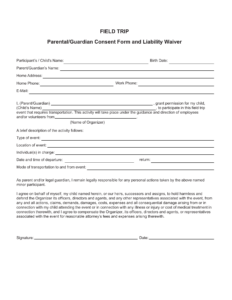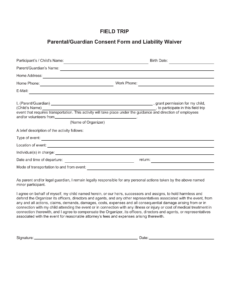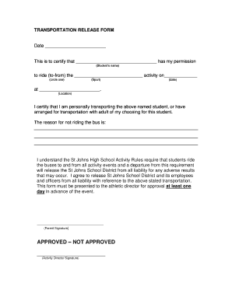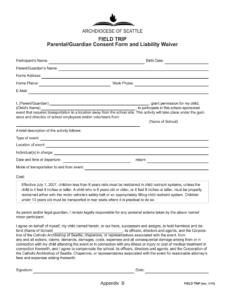Such documentation offers several key advantages. It provides evidence of parental consent, protecting the institution from legal challenges. Clearly outlining expectations and responsibilities minimizes misunderstandings and potential disputes. The inclusion of a waiver helps limit the institution’s liability in case of unforeseen accidents or incidents, provided they fall within the waiver’s scope. This proactive approach contributes to a safer and more secure learning environment for all involved.
This article will further explore the essential components of these documents, offering practical guidance for their creation and implementation, along with best practices for managing risk associated with off-campus educational activities.
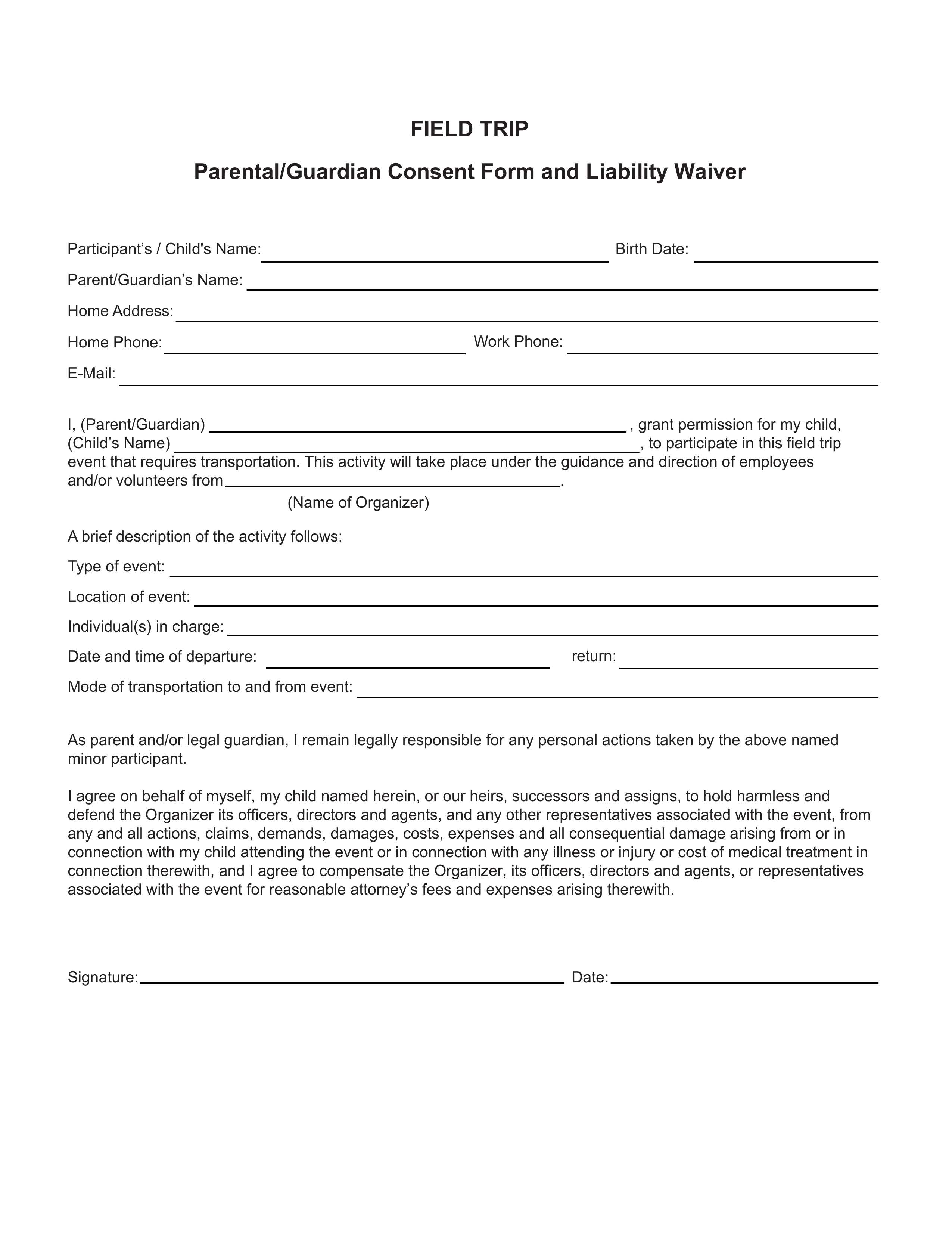
Key Components of Field Trip Authorization and Liability Release Forms
Effective authorization and liability release forms require specific information to ensure clarity and legal soundness. These components protect both the educational institution and the participating students.
1. Student Information: Accurate student details, including full name, grade, and emergency contact information, are essential for identification and communication.
2. Trip Details: Comprehensive information about the trip, including the destination, date, time of departure and return, and purpose of the excursion, provides context and transparency.
3. Transportation Information: Specifying the mode of transportation and any associated risks helps parents or guardians make informed decisions.
4. Medical Information: Disclosure of relevant medical conditions, allergies, and required medications allows for appropriate care in case of emergencies.
5. Parental/Guardian Consent: A clear signature line for parents or guardians affirms their consent for the student’s participation and acknowledges their understanding of the associated risks.
6. Liability Waiver: This section releases the institution from liability for specified incidents, outlining the scope and limitations of the waiver. Clarity and specificity are crucial in this section.
7. Emergency Contact Information: Providing multiple emergency contact numbers ensures accessibility in unforeseen circumstances.
8. Behavioral Expectations: Outlining expected student conduct during the trip helps maintain order and safety.
Thorough documentation ensures all parties are well-informed and protected, contributing to a safe and successful educational experience.
How to Create a Field Trip Authorization and Liability Release Form
Creating a comprehensive authorization and liability release form is crucial for ensuring student safety and protecting the organizing institution. A well-drafted document minimizes misunderstandings and provides a clear framework for all parties involved.
1. Consult Legal Counsel: Reviewing the form with legal counsel ensures compliance with applicable laws and regulations. This step is particularly important for the liability waiver section.
2. Gather Essential Information: Compile all necessary information about the field trip, including the destination, date, time, transportation details, and any potential hazards.
3. Draft Clear and Concise Language: Use precise and unambiguous language throughout the document. Avoid jargon and technical terms that may be difficult for parents or guardians to understand.
4. Outline Specific Responsibilities: Clearly define the responsibilities of the students, parents or guardians, and the educational institution. This includes expectations for behavior, emergency procedures, and communication protocols.
5. Include a Comprehensive Liability Waiver: This section should clearly define the scope of the waiver and the specific incidents for which the institution will not be held liable. Legal review is essential for this component.
6. Provide Space for Signatures and Dates: Include designated spaces for parents or guardians to sign and date the form, indicating their informed consent.
7. Distribute and Collect Forms: Distribute the forms well in advance of the trip and ensure all participants return completed copies before departure.
8. Maintain Secure Records: Keep signed forms securely stored and easily accessible for reference in case of incidents or disputes.
A meticulous approach to drafting and implementing these forms demonstrates a commitment to student safety and responsible organizational practices. This proactive measure facilitates a positive and secure learning environment for all participants.
Careful consideration of the elements within authorization and liability release documentation for off-campus educational excursions is paramount for student safety and institutional protection. Comprehensive documentation, informed consent, and clearly defined responsibilities create a framework for successful and secure learning experiences outside the traditional classroom. Legal review and adherence to best practices are crucial for mitigating risk and ensuring compliance with applicable regulations. Clear communication and transparent procedures contribute to a positive and productive environment for all participants.
Prioritizing student well-being and implementing robust risk management strategies are essential for responsible educational practices. Proactive measures, including thorough documentation and consistent communication, foster trust and contribute to enriching educational experiences. Continued review and refinement of these practices enhance safety and minimize potential issues, ultimately fostering a more secure and rewarding learning environment.
